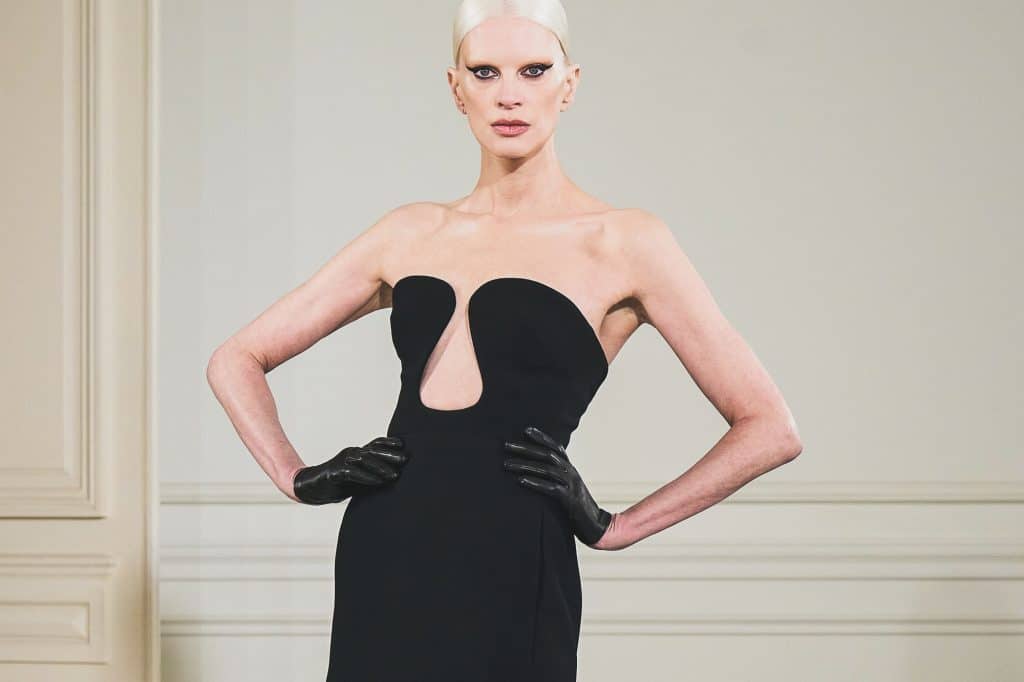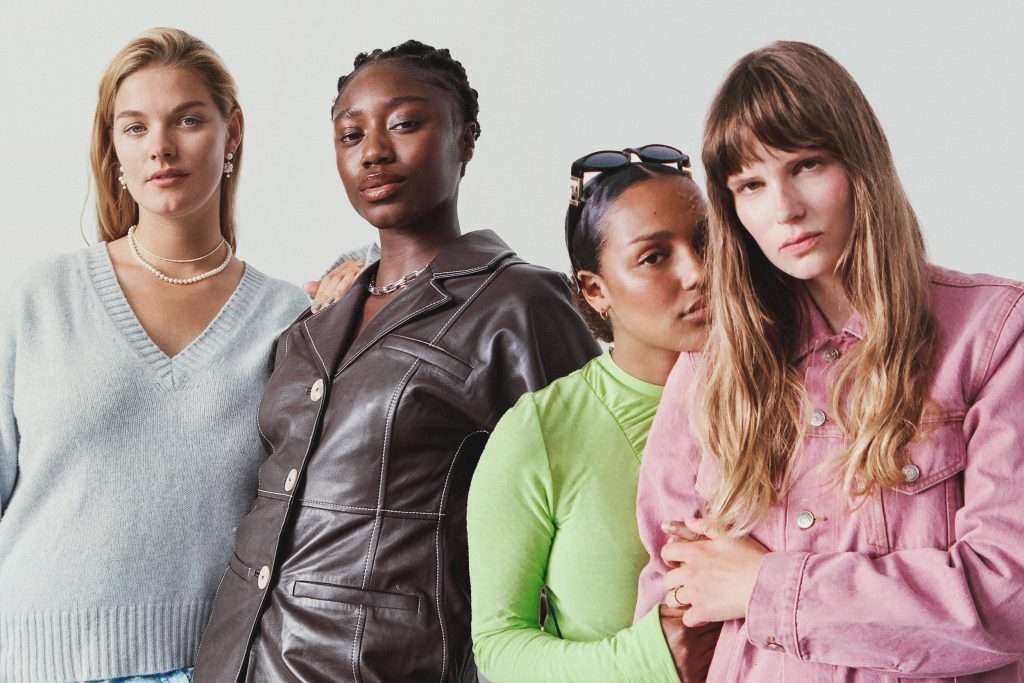From Valentino’s Vintage Project to Bottega Veneta’s vault, luxury brands are reimagining circular fashion.
Pop-up shops in Milan, Tokyo, New York, and Los Angeles this month will showcase Italian luxury label Valentino’s Vintage Project—curated vintage and archive pieces hand-approved by the label along with consultation services for customers on how to care for their Valentino garments. The shops are part of Valentino’s commitment to circular fashion, building on a recent spate of commitments and initiatives.
In a statement last year, the Maison compared the circular fashion model within its collections to a series of constellations, “each comes from the same initial explosion that determined its existence and to which it’s now reconnected.”
It’s esoteric, but an apt metaphor as the brand—like a growing number of luxury labels—aims to increase sustainability efforts and improve transparency about its efforts.
Valentino pop-ups
Through June 12, Pauline Vintage in Milan will host the Valentino pop-up; Tokyo’s The Vintage Dress, New York Vintage in New York City, and Resurrection Vingate in Los Angeles will also host the designer’s pop-ups for an additional week.
Valentino partnered with both New York Vintage and Resurrection last year when it first launched the Vintage Project. Resurrection, located on Melrose Avenue in West Hollywood, has become the city’s premier destination for historical vintage since it opened in 1996. It is a frequent destination for the film industry in era research and design.

Similarly, New York Vintage, which opened in 1999, has also curated historical fashion and boasts a celebrity clientele including former First Lady Michelle Obama and singer and Fenty Beauty founder, Rihanna.
The announcement comes on the heels of the launch of “Creating Shared Value,” a section on the Valentino website detailing its conscious-driven business model launched late last month. Valentino is the first luxury brand to partner with Karma Metrix, a sustainability measuring site, to assess and improve its efforts. The luxury house said in a statement that its three core values are People, Planet, and Product.
It partnered with BAFTA-winning animator Ainslie Henderson to create a stop-motion video for the launch of the initiative. In the video, an organic green cotton thread stitches the Valentino logo, the planet, and people, on a recycled cotton canvas.
In January, Valentino reimagined its popular sneakers with recycled and bio-based vegan materials, replacing leather with corn and viscose-based alternatives. In April, it partnered with Air France to offset its travel-related CO2 emissions with contributions to the airline’s sustainable aviation fuel program.
Bottega Series
Fellow Italian luxury label Bottega Veneta announced Bottega Series this week that it’s increasing its sustainability commitments by releasing archival designs from its inventory. The new section on its website currently has a dozen designs available.
Bottega has been slower to detail its steps toward sustainability than other luxury houses.

“The philosophy of Bottega Series challenges the very construct of seasons—pieces that are timeless do not need to abide by a seasonal calendar,” Bottega’s CEO Leo Rongone, said during the Global Fashion Summit in Copenhagen. “Instead, we are focused on creating remarkable singular objects that last forever. We wanted to showcase the exceptional craftsmanship and materials required to make these pieces and offer some insight into how intrecciato has been used in many ways across several collections.”
The brand says it is also working to improve the sustainability metrics of its products including an internal rating system. “Each product that we develop and produce is rated based on how close or far we are to our 2025 sustainability targets,” Rongone said.
Bottega Veneta takes a stance a number of luxury brands are underscoring: luxury items are the original slow fashion—made expertly in order to last. British luxury house Burberry has increased its focus on craftsmanship and aftercare.
Sustainability in the luxury sector
Last month Nona Source, LVMH’s outlet for deadstock materials from its Maisons, opened a London showroom in a bit to promote circularity.
Others, like Jean Paul Gaultier, Gucci, and Oscar de la Renta have launched their own resale platforms. Gautier’s announcement came coincidentally on the same day that Valentino announced its Vintage Project last year. And the platforms dedicated to luxury resale—The RealReal, Vestiaire Collective, and Fashionphile, among others, continue to set new sales records.
A recent report found that secondhand fashion specifically will surpass $82 billion by 2026—outpacing fast fashion. The report also found that brands will play a crucial role in secondhand’s future.

“The last 10 years of resale were dominated by marketplaces, but brands and retailers are driving the next wave of secondhand,” James Reinhart, thredUP CEO & Co-Founder, said in a statement. “We’re still in the very beginning of this trend, but the acceleration of resale adoption is a positive signal with enormous benefits for the planet.”
Some of the most hyped re-launches have been collections in partnership with resale platforms. Ganni partnered with Vestiaire Collective last year on archived designs, and so did Alexander McQueen. In the U.K., Burberry partnered with My Wardrobe HQ for its first foray into resale.
But secondhand is a wholesale fix to fashion’s many problems that stretch across the value chain from labor and materials issues to overproduction and end of life. Bottega Veneta’s Rongone says curbing our lust for the immediate is ultimately the most lasting fix.
“In a society that stimulates clients to consume more and more frequently, our frame of mind is to maintain products in use for longer, reducing the need for replacement and, as a consequence, decreasing the environmental footprint,” he said. “True luxury requires time. We count days, not hours to make our products.”


